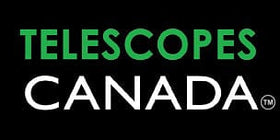Description
Highlights
- Telecentric with 2" outer diameter and T-2 threads on both sides
- Aplanatic, with 2x focal length extension to achieve a parallel f/30 beam in conjunction with ~f/15 optics systems – free of field curvature
- Primarily calculated and produced for H-alpha at 656,3 nm, delivering maximum Strehl (definition brightness)
Baader Telecentric Systems for focal length extension
for supplying a parallel optical beam and for providing sufficient backfocus, in conjunction with any SolarSpectrum H-alpha filter
Telecentric optics sets are often confused with a barlow lens. Both can be used to increase the focal length. Telecentric assys are designed so that the exit pupil seemingly is positioned at infinity, which means that the center ray from any point in the field appears to come from infinity and is therefore perpendicular to the image plane and parallel to the optic axis. This means that the off axis beam does arrive at the image plane with the same angular geometry as the axial rays. All field elements look as if they where on axis, across the image plane and - unlike to a barlow lens - the edge field rays are not tipped bundles.
Because all the principal rays across the image plane are perpendicular to the image plane, the rays at the edge of the field will pass through an etalon just in front of the focal plane with exactly the same geometry as the rays on axis. So in an f/30 telecentric optical arrangement, the etalon sees the exact same geometry clear across the field, and the spectral bandpass does not shift in wavelength across the entire field of view.
Starting from an aperture ratio of ~f/15 (+2x Telecentric), ~f/10 (+3x Telecentric) or ~f/7.5 (+4x Telecentric), the Baader TZ-systems will create a parallel beam with ~f/30 aperture ratio. In the case of largely deviating telescope focal lengths, the clear objective aperture of the telescope should be reduced in diameter to the point that the final resulting f/ratio is close to f/30 again (we do offer a suitable iris-diaphragm for this purpose).
TZ-system working distance to the camera sensor – when measured from their rear lens – range from 200mm for the TZ-2 to 230 mm for the TZ-4 - to 250 mm for the TZ-3. This provides enough room for the H-alpha filter housing and most any accessories, e.g. a Baader 2" mirror diagonal or any conceivable camera device. All TZ-coatings are matched to the different lens glass-substrates and optimized for maximum throughput at 656 nm.
Please also note the detailed PDFs under the Tab "Downloads" for further information
IMPORTANT NOTE
TZ-optical systems are essential for undeteriorated performance of heated SolarSpectrum filters:Please note that for H-alpha observations below 1 Ang halfbandwidth (FWHM) a telecentric lens system is absolutely mandatory, in order to achieve the recommended focal ratio of f/30 to (preferably) f/40! Because only with a telecentric approach you can create a perfectly parallel optical path which is essential for the unrestricted function of such a complicated etalon.
A TZ-lens-system is an ESSENTIAL prerequisite. One could also optically - or by means of a Barlow lens - bring a telescope to a focal ratio of f/30, but this does not mean at all that a parallel optical path is created. And mind you, a still slightly conical optical path with f/30 sent into an etalon with 0.5 Ang FWHM would only provide the contrast as if the filter had a FWHM of 0.7 Ang or much worse.
It doesn't have to be a TZ-4. The new 2" Research Grade TZ-3 Telecentric System (3x focal length) (#2459257 , € 445) is much better in terms of optical calculation than the 20 year older TZ-4. So it makes sense for the user to start with a TZ-3 RG and rather stop down the telescope aperture to get to f/30. This will bring out the real contrast of the chosen SolarSpectrum-filter much better than with a poorly matched system where, for example, the older TZ-4 has a smaller clear aperture than the Solar Spectrum-Etalon would require. In the long run, a newly calculated, large RG TZ-4 is in preparation - it is worth to wait for it and to get familiar with H-alpha observation with the TZ-3 first. In the end one will certainly need both systems (RG-TZ-3 and RG-TZ-4) and adjust the telescope aperture individually - as the system would require to enable an f/ratio of f/30 at minimum or f/40 as optimum.
Only AFTER the H-alpha etalon you can extend the field size by reducing the f-ratio with adding the new ResearchGrade telecompressor 0.4 into the optical train.
Basically - a Barlow lens has no place in an H-alpha system!
Specifications
| Manufacturer | Baader Planetarium |
|---|---|
| SKU (#) | 2459255 |
| EAN Code | 4047825008701 |
| Net weight (kg) | 0.30 |
| Focal length extension | 2-fach |
| Usage | for H-alpha observation with SolarSpectrum Filters |
| Inner Connection (lens sided) | Thread, T-2 (M42 x 0,75) |
| Outer Connection (eyepiece/-camera-sided) | Thread, T-2 (M42 x 0,75) |


